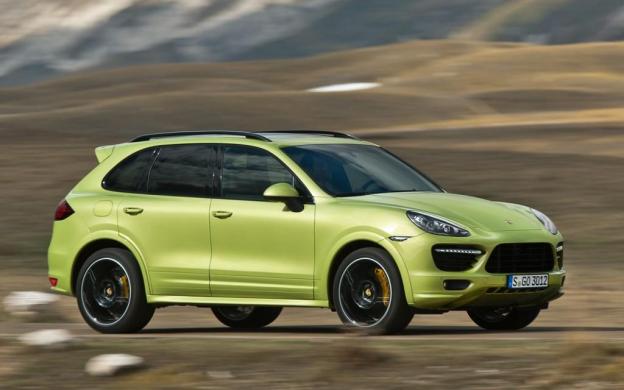 Porsche does not like to launch new models, but it does like to tweak existing ones. From the Targa to the GT3, there’s a 911 model to suit every taste, and Porsche is doing the same thing with its Cayenne SUV. The second generation Cayenne GTS will be unveiled at the upcoming Beijing Motor Show. It will fit in the lineup between the Cayenne S and Turbo.
Porsche does not like to launch new models, but it does like to tweak existing ones. From the Targa to the GT3, there’s a 911 model to suit every taste, and Porsche is doing the same thing with its Cayenne SUV. The second generation Cayenne GTS will be unveiled at the upcoming Beijing Motor Show. It will fit in the lineup between the Cayenne S and Turbo.
The GTS is supposed to be a step up in performance from the Cayenne S, but it won’t top the more powerful Cayenne Turbo. Consequently, its 4.8-liter V8 is more powerful than the S’; the GTS’ mill makes 420 horsepower, instead of 400. The V8 drives all four wheels through an eight-speed automatic transmission. Twenty more horsepower gives the Cayenne GTS a slight edge over the Cayenne S. It can do 0-60 mph in 5.4 seconds and reach a top speed of 162 mph, versus 5.6 seconds and 160 for the base model. Still, the GTS can’t compete with the Cayenne Turbo, which, as the name implies, has a twin-turbocharged V8. The spiciest Cayenne has 500 hp, can do 0-60 in 4.4 seconds, and reach a top speed of 172 mph.
The Cayenne GTS also gets some exterior enhancements to distinguish it from its big and little brothers. The car rides 0.8-inch lower on 20-inch “RS Spyder” wheels that supposedly reference Porsche’s LeMans racer. It also gets gloss black trim, which contrasts very well with the Peridot Metallic paint shown above (it also comes in Carmine Red). The GTS also gets the Turbo’s body kit, if not its extra power.
The interior is trimmed in Alcantara and features the Sport Chrono pack from the 911. The package includes a dashboard-mounted stopwatch and a “Sport” button, which puts the stability control and transmission into more aggressive settings.
In terms of price, the Cayenne GTS splits the difference between the Cayenne S and Turbo, just as it does in performance. The GTS will cost $83,025 (with a $975 destination charge), more than the $65,975 S, but less than the $108,175 Turbo. The GTS fits nicely in the middle of the Cayenne lineup, but Porsche might be splitting hairs here. Is it worth paying more than $15,000 extra for 0.2 second and two miles per hour? In an SUV? Things might be different with a 911 or Cayman, but the average Cayenne driver probably won’t notice the difference in performance. The Sport Chrono package could make the GTS more entertaining the Cayenne S; that seems like the only reason to buy one. The Turbo may cost more, but it offers significant boost in performance.
If the Cayenne GTS does make sense to you, your wait will be short. After its Beijing debut, the newest variant of Porsche’s SUV will go on sale in August.


